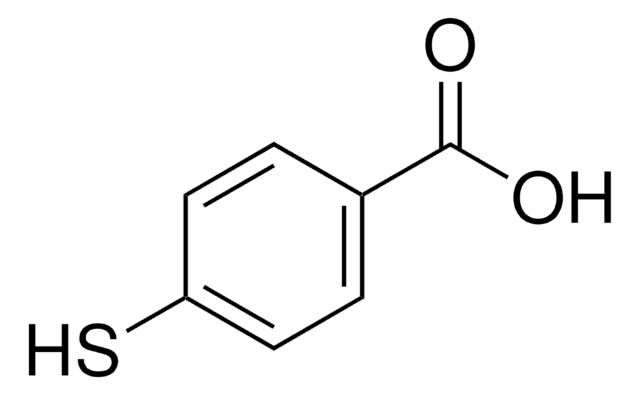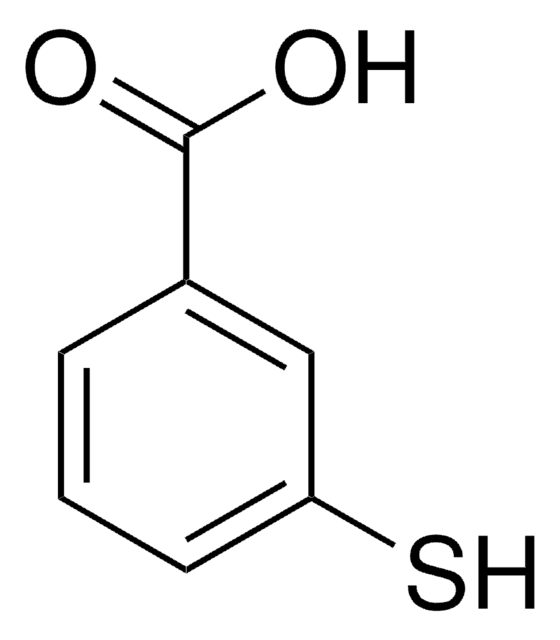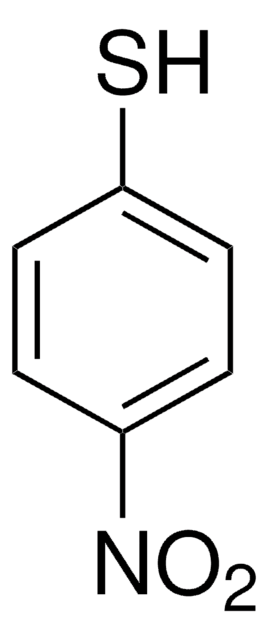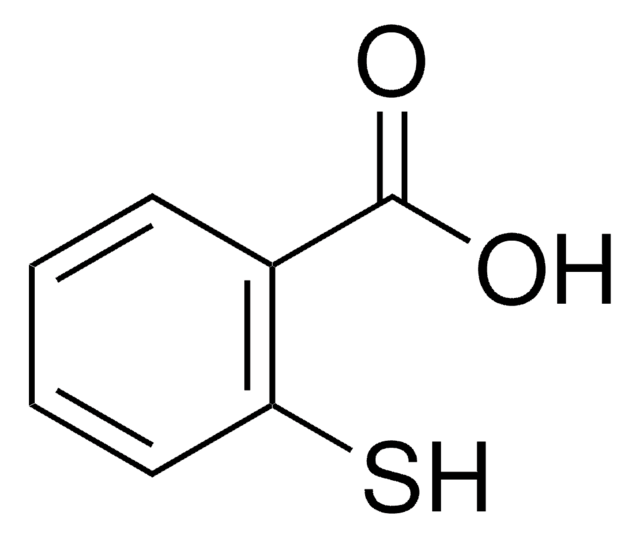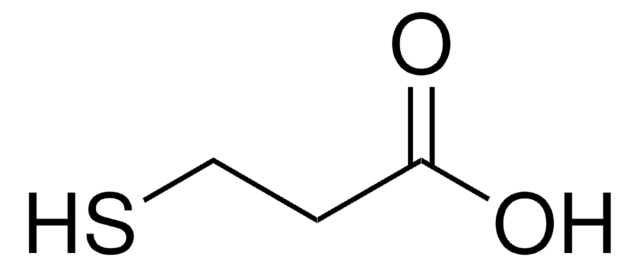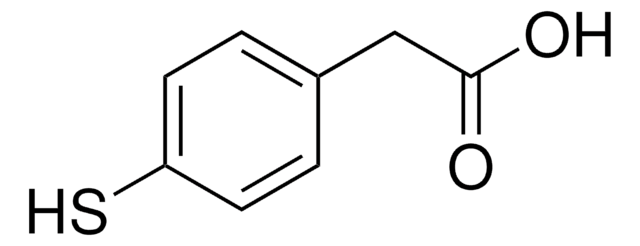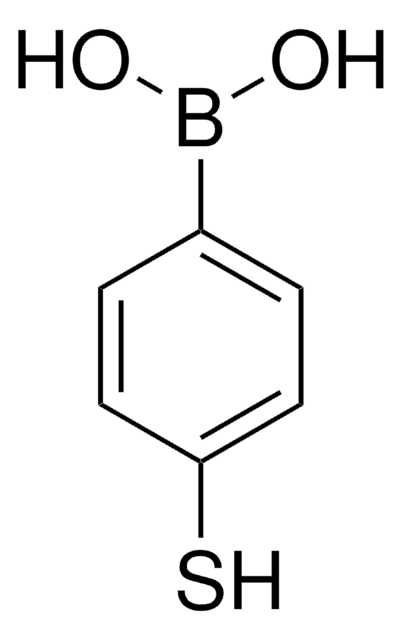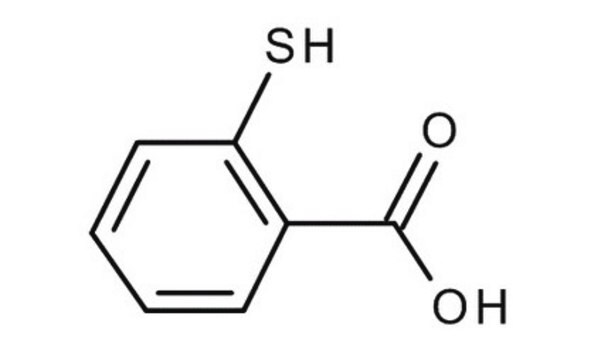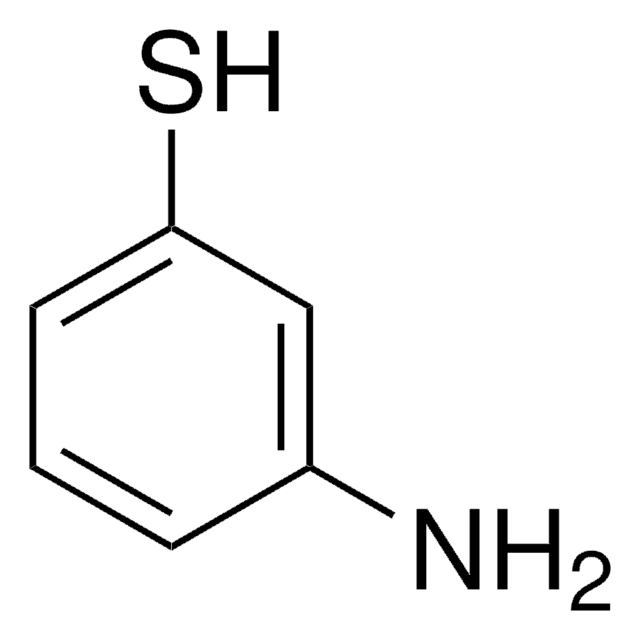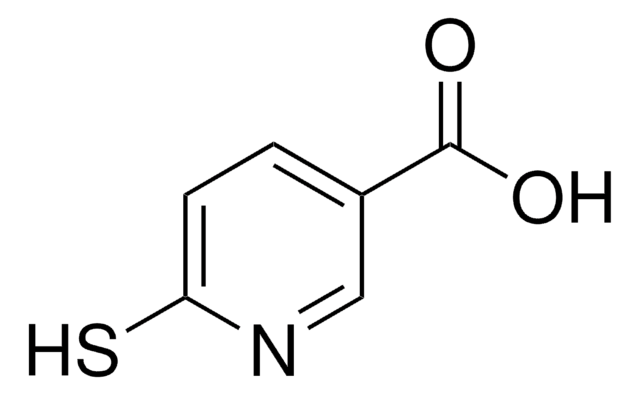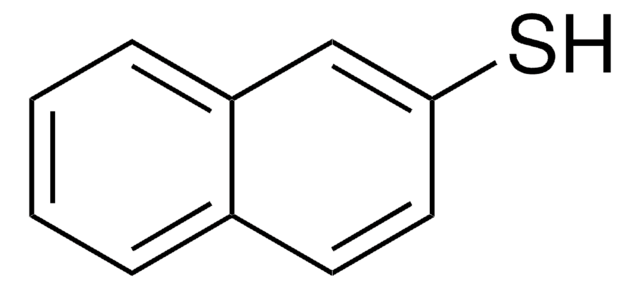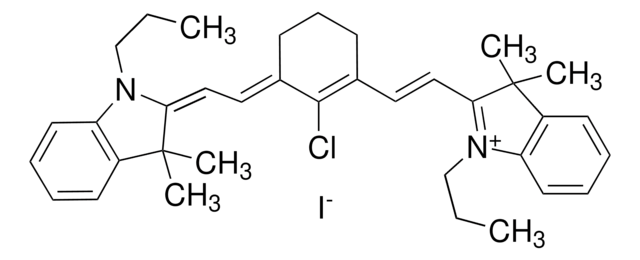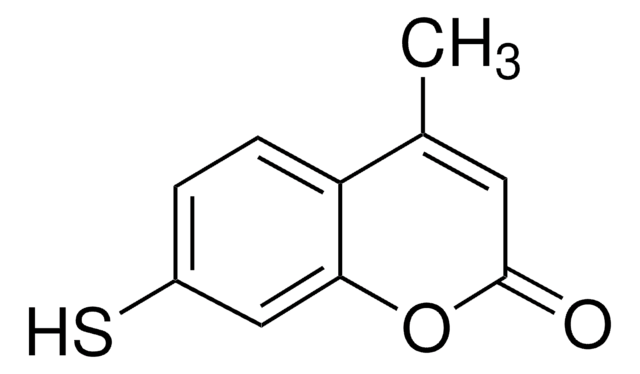662534
4-Mercaptobenzoic acid
technical grade, 90%
Synonym(s):
4-Carboxybenzenethiol, 4-Carboxythiophenol, 4-Mercaptobenzoic acid, p-Carboxybenzenethiol, p-Mercaptobenzoic acid
About This Item
Recommended Products
grade
technical grade
Quality Level
assay
90%
form
solid
mp
215-224 °C (lit.)
functional group
carboxylic acid
SMILES string
OC(=O)c1ccc(S)cc1
InChI
1S/C7H6O2S/c8-7(9)5-1-3-6(10)4-2-5/h1-4,10H,(H,8,9)
InChI key
LMJXSOYPAOSIPZ-UHFFFAOYSA-N
Looking for similar products? Visit Product Comparison Guide
Related Categories
General description
Application
- SERS substrate for food adulteration detection: 4-Mercaptobenzoic acid was employed in the layer-by-layer biopolymer assembly for the in situ fabrication of AuNP plasmonic paper, serving as a SERS substrate useful in detecting food adulteration (Viriyakitpattana et al., 2024).
- Development of magneto-plasmonic nanoparticles: Research highlighted the use of 4-Mercaptobenzoic acid in the multiwavelength SERS of magneto-plasmonic nanoparticles, obtained through combined laser ablation and solvothermal methods, showing versatility in nanoparticle synthesis (Talaikis et al., 2023).
signalword
Warning
hcodes
Hazard Classifications
Eye Irrit. 2 - Skin Irrit. 2 - STOT SE 3
target_organs
Respiratory system
Storage Class
11 - Combustible Solids
wgk_germany
WGK 3
flash_point_f
Not applicable
flash_point_c
Not applicable
ppe
dust mask type N95 (US), Eyeshields, Gloves
Choose from one of the most recent versions:
Already Own This Product?
Find documentation for the products that you have recently purchased in the Document Library.
Customers Also Viewed
Our team of scientists has experience in all areas of research including Life Science, Material Science, Chemical Synthesis, Chromatography, Analytical and many others.
Contact Technical Service